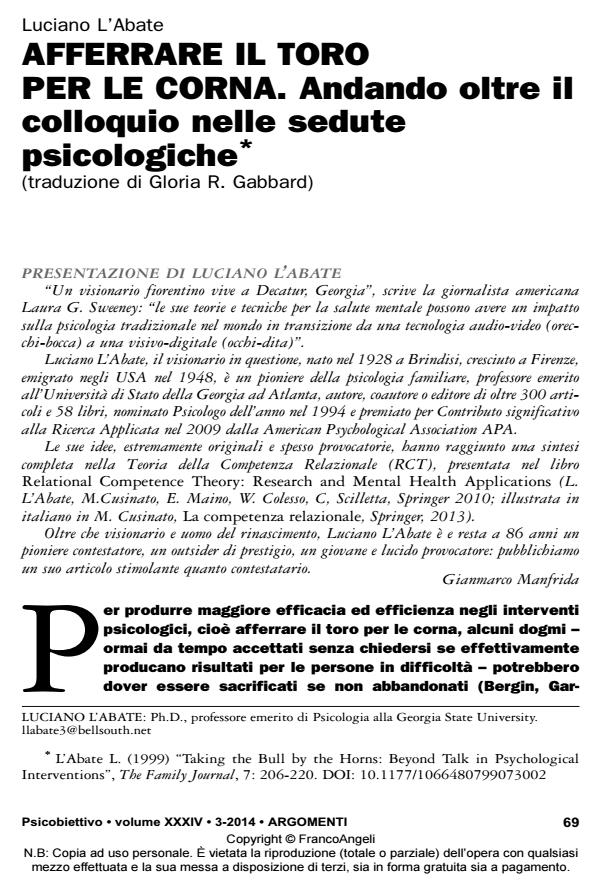Taking the bull by the horns. beyond talk in psychological interventions
Journal title PSICOBIETTIVO
Author/s Luciano L'Abate
Publishing Year 2015 Issue 2014/3
Language Italian Pages 34 P. 69-102 File size 170 KB
DOI 10.3280/PSOB2014-003005
DOI is like a bar code for intellectual property: to have more infomation
click here
Below, you can see the article first page
If you want to buy this article in PDF format, you can do it, following the instructions to buy download credits

FrancoAngeli is member of Publishers International Linking Association, Inc (PILA), a not-for-profit association which run the CrossRef service enabling links to and from online scholarly content.
The purpose of this article is to argue that as long as the therapeutic community relies on commonly accepted sacred cows to produce results, little if any progress will take place. The five sacred cows of traditional psychological interventions (prevention, psychotherapy, and rehabilitation) are based on the following: (a) talk; (b) faceto- face contact; (c) the professionals’ proper style and personality; (d) adding family members, the more people the better; and (e) the more sessions the better. New psychological interventions that may challenge the sacred cows as we know them are as follows: (a) psychoeducational skill training programs; (b) computer assisted interventions, including verbal, visual (i.e., virtual reality), and neurobiofeedback; (c) manualized therapies; (d) eye movement desensitization and reprocessing; and (e) programmed distance writing, as exemplified by mental health workbook. In addition, suggestions for minimally verbal and maximally action-oriented props and prescribed tasks are given.
Keywords: Talk; Face-To-Face Contact; Computer Assisted Interventions; Distance Writing.
Luciano L'Abate, Afferrare il toro per le corna. andando oltre il colloquio nelle sedute psicologiche in "PSICOBIETTIVO" 3/2014, pp 69-102, DOI: 10.3280/PSOB2014-003005